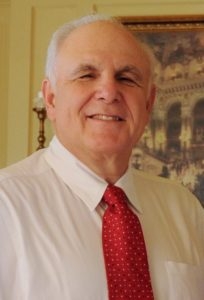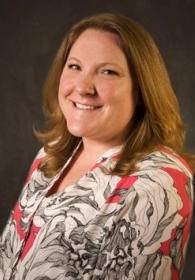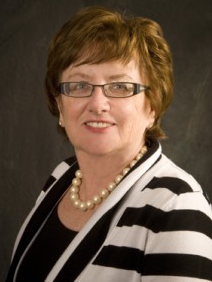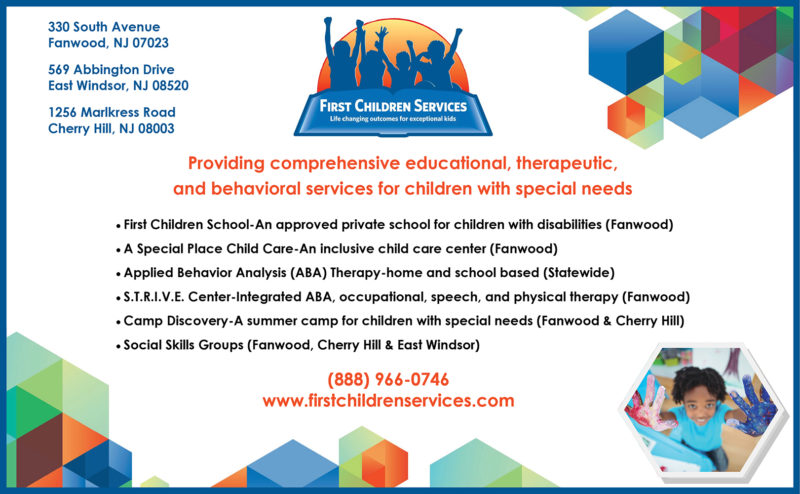Supporting children with autism or other developmental disabilities and significant co-occurring medical conditions presents substantial challenges to teachers, parents and all involved caretakers. This article presents an overview of the interdisciplinary model and a representative case study illustrative of operations at the First Children School which is an Approved Private School in New Jersey. This hybrid service setting contains components of special education and medical home care.

Howard Savin, PhD

Carla Johnson, MS, BCBA

Ellen D’Amato, PhD
First Children School, located in Fanwood, New Jersey, is accredited by the National Commission for the Accreditation of Special Education Services (NCASES). The school serves 90 children in grades pre-k through high school with autism and other developmental disabilities. The school provides educational and therapeutic services, per their respective IEPs, to children from 25 sending districts located in seven New Jersey counties. First Children, formerly the school program of Children’s Specialized Hospital, has a long history of providing coordinated educational services to support children with challenging developmental, medical and rehabilitative needs. The school benefited from the expertise and resources of the hospital’s medical, therapeutic and rehabilitative staff including neurodevelopmental pediatricians, psychiatrists, orthotists, dietitians, and physiatrists. In 2009, the school acquired a new owner and became First Children. The school continued its collaboration with the hospital through ongoing Neurodevelopmental and Physiatry Clinics. In addition to its staff of nurses, special education teachers, occupational therapists, physical therapists, speech pathologists, psychologist and social worker, First Children expanded its staff to meet the complex needs of its growing program for children with multiple disabilities. As a result, teachers of the deaf, Board Certified Behavior Analysts, behavior therapists as well as a teacher of the visually impaired and a consulting audiologist were added to the interdisciplinary team. At this time, over seven hundred individual, collaborative and consultative services are provided on each week.
Service delivery by our interdisciplinary teams requires creation, connection and communication between systems. Every child’s educational plan is formally reviewed with parents and case managers after 30-days. Additions/modifications to the plan are made accordingly. A specific interdisciplinary team is identified as well as the types and frequencies of recommended services. Team members then connect on an ongoing basis both informally and during team meetings. Depending on the needs of the child, teams may include a nurse, behavior analyst, occupational therapist, physical therapist, speech pathologist, psychologist, social worker, teacher of the deaf or teacher of the visually impaired as well as the special education teacher.
Coordination of care is essential to meet the needs of children with a dual diagnosis. Knowledge of each child’s diagnosis by respective team members is key. All specialty areas including education, medical, behavioral/ABA, speech, occupational, and physical therapies must understand their targeted impact on each child with a dual diagnosis. For example, autism with hearing loss might shift the focus of communication by incorporating sign language into all therapeutic and behavioral interventions. Ongoing training and meetings for the interdisciplinary team is key for coordinating services to ensure all areas of need are being addressed.
Case Study
John is an 8-year-old boy diagnosed with autism, macrocephaly, unilateral hearing loss, and global developmental delay. He also frequently suffers from gastrointestinal issues. For the past 5 years, John has attended First Children where he receives occupational, physical, speech, and ABA therapies. John also receives services from a teacher of the deaf and is closely followed by the school nurse. He is currently in a classroom that utilizes the principles of Applied Behavior Analysis (ABA) throughout the school day. John’s current goals include increasing receptive and expressive language, matching, identifying name, numbers, letters, colors, shapes, and familiar people, and waiting for instructions and preferred items. The teacher of the deaf currently signs in the classroom for John during group activities which has increased his ability to attend, reduced maladaptive behaviors, and increased his overall participation. Prior to First Children, John was unable to understand or utilize sign language to communicate. He is now able to recognize 100 signs receptively and will independently utilize 25 signs expressively due to the coordination of care across all of John’s teachers and therapists. It was found that a larger sized classroom was not conducive for John’s needs. He is currently in a physically smaller classroom with six classmates and there has been a significant reduction in problem behaviors.
John has low muscle tone and prefers to not sit or stand on his own. He previously received co-treat sessions with the occupational and physical therapist once a week to address his global motor and sensory needs. Currently his occupational and physical therapy sessions are individual to address more specific therapeutic goals for each specialty. Since his enrollment at First Children, John has utilized various adaptive seating systems that allowed for safe transportation and physical support while in the classroom and therapies. Within the past year, John is now able to walk in the hallways independently due to a decrease in unsafe behaviors. Reduction of flopping, elopement and aggression in the hallway was addressed by coordinating interventions with all teachers and therapists working with him.
John has chronic gastrointestinal issues and engages in frequent rumination. These issues are closely monitored by the school nurse. In consultation with the team, the behavior analyst introduced chewing gum as an alternative behavior for the rumination. John’s bowel issues peaked in 2016-2017. In coordination with the family and gastroenterologist, the nurse created a bowel plan which significantly reduced the behaviors and frequency of the gastrointestinal/bowel distress. This plan was implemented across all environments. The school nurse communicates and coordinates care with the gastroenterologist and audiologist on a regular basis.
John also receives ABA therapy throughout the school day in his classroom and individually 4 times per week with a behavior technician. He has a history of elopement and this has successfully been addressed via ABA programing and generalized across teachers and therapists. John has also shown progress in his ability to attend and scan during work tasks. John has made gains in academic goals which are presented in a discrete trial format. This method is utilized in and out of the classroom environment in a variety of therapeutic settings. He now does well with transitions and responds positively to reinforcement.
Specifically, John has demonstrated an increase in both expressive and receptive language skills. The school behavior analyst has worked closely with John’s family in addressing behaviors, reinforcement strategies, and signing that can be done in the home. Since the increase in John’s communication, there has been a noticeable improvement in his ability to interact with others and also participate in social exchanges with his teachers and peers.
Creation, connection and communication are key components of an effective delivery system for children with developmental disabilities and medical conditions. A child’s educational, medical, behavioral and therapeutic needs provide the framework for the identification of appropriate team members. Composition of these interdisciplinary teams may vary depending on the current as well as changing needs of the child. As illustrated in our case study, a core team, including a special education teacher and speech pathologist, occupational and physical therapists, was supported by a school nurse, social worker, behavior analyst/behavior therapist, psychologist and teacher of the deaf. Parents continue as critical members of the team as well. The ability to draw from a staff of professionals with diverse clinical backgrounds provides the depth of expertise and experience that is required when providing a comprehensive educational program for this population.
Opportunities for team members to connect occur in many ways. Formal as well as informal team meetings are scheduled daily and as needed. Co-treatments, where two professionals provide intervention together, have been effective in sharing strategies, appropriate positions and/or techniques. Parent connections are critical as well for support and home carry-over. Parents are welcome to observe or participate in all therapy sessions. The school psychologist and social worker are available to facilitate access to community resources to help address ongoing challenges. An integrated system of total communication, established by our speech pathologists, teachers of the deaf and behavior team, assists all children in accessing and connecting with their environment. Connection with physicians and clinicians outside of the school is facilitated by our nursing staff who maintain a close relationship with our families.
Consistent communication is critical. In-service programs and trainings are provided so staff from different backgrounds and disciplines can understand not only the role but also the terminology associated with other disciplines. Medical information is shared and explained at neurodevelopmental and physiatry clinics which are scheduled on a regular basis. Staff have ongoing opportunities to share updated information gained from their own experiences and backgrounds. All the above maximizes collaboration which is essential for effective intervention.
Ellen D’Amato, PhD, is School Psychologist and Carla Johnson, MS, BCBA, is Senior Clinical Director of Behavioral Health Treatment Services at the First Children School. Howard Savin, PhD, is Chief Clinical Officer of First Children Services.
For further information about the First Children school program or other programs offered by First Children Services please contact Dr. Howard Savin at hsavin@firstchildrenservices.com or visit www.firstchildrenservices.com.





